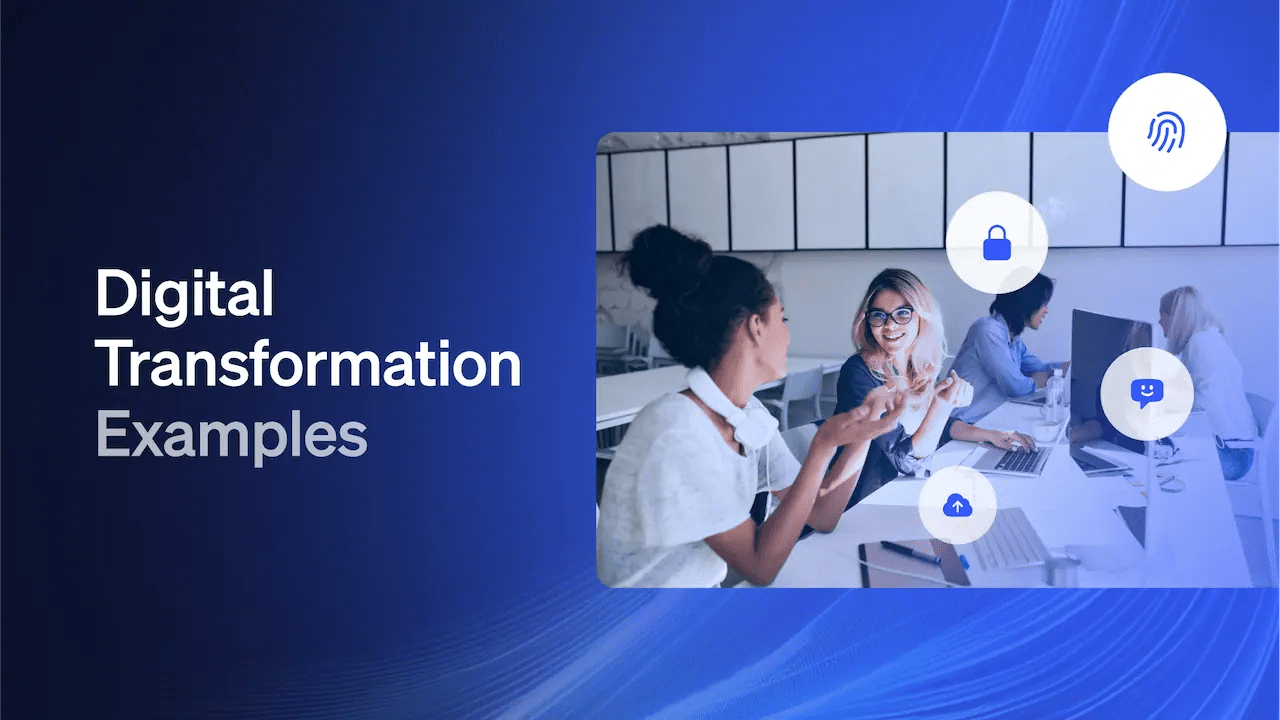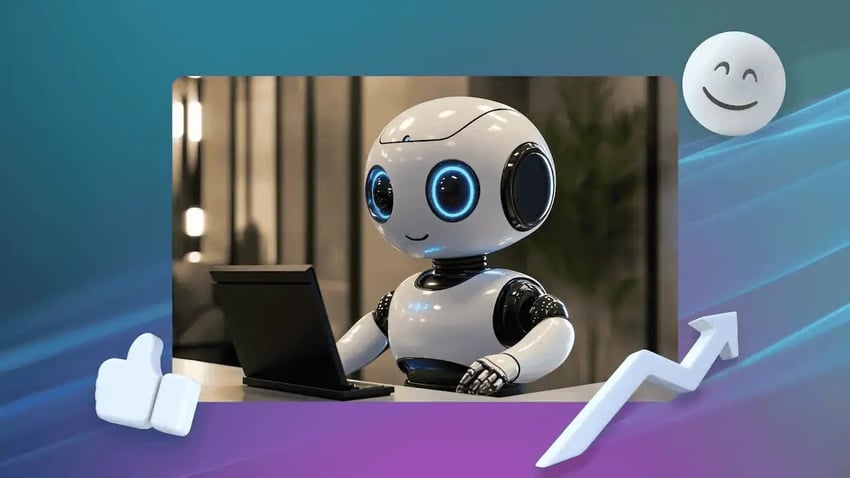For 80% of companies, digital transformation brings not only modernization but also increased profitability. According to a landmark SAP study, businesses that successfully adopt this approach no longer view digital growth as a distant prospect, but as the new normal.
Embarking on a digital transformation journey can seem intimidating. Often, this means implementing new technologies, redesigning business processes, and abandoning legacy systems. But in a world of rising customer expectations and fierce competition, standing still is the biggest risk.
If you’re not sure where to start, you’ve come to the right place. This article discusses five successful digital transformation examples, showing how five world-class companies — from IKEA to Netflix — have successfully mastered going digital. Their stories, including their setbacks and successes, offer strategies for your own transformation process.
What Is Digital Transformation? Why Is It Important?
Digital transformation is the strategic integration of digital technologies into all areas of a business, fundamentally changing the way they work and create value. It represents a cultural shift that requires businesses to continually challenge the status quo, experiment, and embrace change.
The process redefines core business functions, from internal operations to external customer experience, to create a more agile, efficient, and competitive company. A successful transformation aligns technology, business processes, and corporate culture with changing market demands. This migration can create a clear competitive edge and differentiate your company by not only helping you digitize existing processes but also enabling entirely new business models.
Common technologies used for digital transformation include:
- Artificial intelligence (AI) and machine learning (ML): AI technologies act as analytical engines, using complex algorithms to interpret massive data sets. In a business context, they can provide critical insights into customer behavior, optimize supply chains, predict maintenance needs, and enable intelligent automation, leading to smarter, data-driven decision-making.
- Cloud computing: It provides the flexible and scalable foundation for modern digital initiatives. By providing on-demand access to computing resources — including data storage, servers, and networks— the cloud enables companies to reduce infrastructure costs, accelerate innovation, and deploy new applications faster and more flexibly.
- Internet of Things (IoT): The IoT extends the reach of digital networks into the physical world. It integrates sensors and software into physical products and devices, helping businesses collect real-time data from a wide variety of assets, enabling everything from remote patient monitoring in healthcare to predictive analytics in manufacturing.
- Automation: This involves the use of technology to optimize and execute repeatable business processes. The application can be as simple as automating email notifications in a project management tool or as complex as orchestrating complex, cross-system processes such as employee onboarding or financial reporting, freeing up human capital for higher-value tasks.
- Robotics: This field of engineering develops physical technologies to replicate or augment human actions. In modern companies, robotics ranges from automated guided vehicles (AGVs) in warehouses to robotic process automation (RPA) “bots” that take over digital administrative tasks, leading to significant increases in productivity and accuracy.
The benefits of digital transformation can’t be overstated, making it well worth the additional costs and change management efforts needed to implement them, even if it means ditching the outdated legacy systems you’ve been using for ages.

Successful Digital Transformation Examples
Wondering how to maximize the new opportunities offered by digital solutions? Whether you’re looking for ideas to invest in your digital transformation or proof that engaging key stakeholders can be successful, these five digital transformation case studies show you what’s possible with a little creativity and new technologies — from generative AI to customer experience technology.
Example 1: IKEA Solving the Flatpack Frustration
IKEA, a global leader in self-assembly furniture, identified a challenge during its store redesign: many customers found the furniture assembly process difficult or time-consuming.
Some customers lacked the skills or patience for complex items, leading to frustration and impacting customer satisfaction. This obstacle discouraged purchase and created opportunities for competitors offering pre-assembled or delivered furniture.
IKEA adapted and implemented a two-pronged digital strategy to directly address this problem:
- Service integration: IKEA acquired TaskRabbit, a platform that connects users with local home service experts. This allowed customers to book assembly assistance directly at the time of purchase, demonstrating new ways to improve the customer ecosystem.
- Augmented reality: The company launched the IKEA Place app, which allows customers to visualize scaled 3D models of furniture in their homes. This cloud-based solution added to the digital customer experience and strengthened purchase decision confidence by helping users assess fit and aesthetics before purchasing.
These initiatives contributed to measurable business results:
- E-commerce sales tripled within three years.
- The brick-and-mortar stores were restructured to function as both retail stores and fulfillment centers.
- Data analytics became an integral part of decision-making.
- During the pandemic, IKEA accelerated its digital efforts while adapting to widespread store closures.
- The company adapted to the closure of approximately 75% of its stores during the pandemic and used the disruption to drive digital improvements.
- The company culture remained intact despite many changes.
What can you learn from IKEA’s digital transformation example?
Effective digital transformation addresses real customer problems and business needs. IKEA used technology to remove barriers between its products and the customer experience, turning a common post-purchase challenge into an advantage. It focused on the post-purchase experience, strengthened customer loyalty, and achieved measurable business value.

Example 2: Toyota Gearing Up for Unmatched Efficiency
Toyota’s challenge was to strengthen its manufacturing system, drive innovation, and maintain its quality and safety standards. To achieve this, the company integrated digital tools into key operational areas using a comprehensive methodology.
- Design and prototyping: The company uses computer-aided design (CAD) for precision engineering, 3D printing for rapid prototyping, and generative AI to optimize operations and vehicle design processes.
- Employee training: Virtual reality (VR) simulations support skills development by enabling employees to learn complex processes in a controlled, immersive environment, enhancing the employee experience.
These initiatives delivered measurable, practical benefits. Toyota reduced product development time and costs, brought new models to market faster, and improved training efficiency through enhanced scalability. Toyota combined automation with rigorous manual testing protocols and maintained the product quality.
What can you learn from Toyota’s digital transformation example?
Toyota’s approach shows how digital technologies can enhance existing operating models without replacing them. Integrating technology into established workflows helped the company increase productivity and drive innovation while maintaining the quality standards that distinguish its brand.

Example 3: Goldman Sachs Driving Customer-Centric Transformation
Goldman Sachs is a global banking, securities, and investment management firm offering a wide range of financial services. This required addressing a completely different customer segment with distinct financial habits and expectations that differed from the firm’s traditional clientele — a challenge many retailers and financial institutions face on their journey toward digital transformation.
To support this transformation, the company launched Marcus in 2020, a digital platform offering high-yield savings accounts and personal loans via a mobile app. The goal was to create a scalable, digital business platform tailored to a broader audience. Marcus distinguished itself through tools that help customers achieve their financial goals, including product comparisons with competitors.
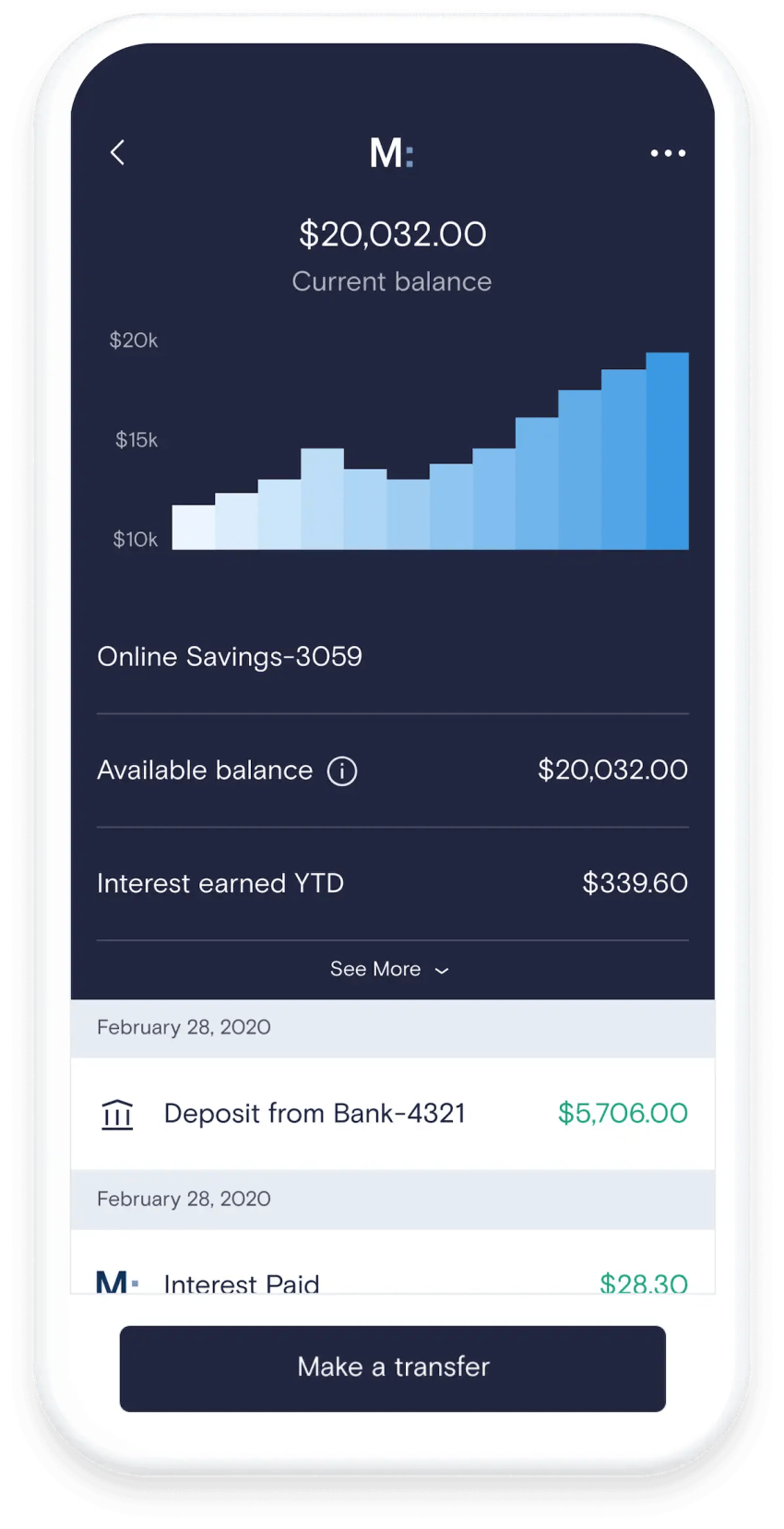
Technologically, the platform was solid. However, by 2023, it had fallen short of expectations and was restructured into three business divisions. The main problem was the lack of alignment between the product and the needs of the new customer segment.
Goldman Sachs wanted to build a “digital speedboat” to compete with established retail banks, but the focus was on branding and marketing. Reaching lower-income customers outside the traditional target group required a more personalized understanding of their financial needs.
What can you learn from Goldman Sachs’ digital transformation example?
Goldman Sachs built a strong digital platform, but missed the mark because it didn’t focus sufficiently on its client strategy. Technology can’t fix a flawed client strategy. A deep understanding of client needs must be the foundation before even a single line of code is written.
Example 4: How Netflix Built a Binge-Worthy Empire
As the streaming market grew, Netflix faced the challenge of retaining subscribers and staying competitive. To address this problem, the company built its business strategy on user data.
- Personalization engine: Netflix developed a recommendation system that analyzes viewing behavior, feedback (like thumbs up/down), and interaction patterns to customize each user’s home screen and content suggestions.
- Data-driven content creation: The company uses aggregated viewer data and data analytics to identify genre trends and audience preferences. These insights guide content investments, including the production of original programs tailored to user demand.
This approach enabled Netflix to increase customer retention, reduce churn, and grow its global subscriber base. Netflix created the “binge-watching” phenomenon and became a global cultural benchmark. The company transformed from a content distributor to a leading content producer, banking on data to inform programming decisions and maintain relevance. Netflix transformed from a content distributor to an award-winning production company.
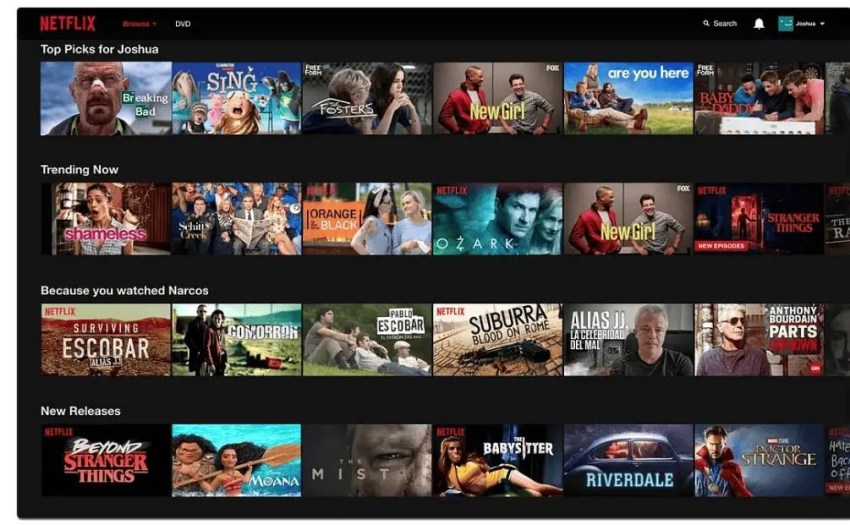
What can you learn from Netflix’s digital transformation example?
Netflix’s example shows how data can be a continuous feedback loop when systematically collected, analyzed, and acted upon. Using audience behavior to influence both user experience and content strategy, the company created a scalable model for engagement and growth. Netflix built its empire by listening to what millions of viewers “told” them through their clicks and viewing habits.
Example 5: State Bank of India Unifying Data for Personalized Banking
The State Bank of India (SBI), one of the world’s largest financial institutions, faced a major challenge: customer data was fragmented across disparate systems.
This limited its ability to offer personalized services and respond efficiently to changing customer needs. At the same time, it required strict compliance with data protection laws such as the Digital Personal Data Protection Act (DPDP).
To improve the customer experience, SBI partnered with HCL Software and implemented a centralized marketing technology (MarTech) platform. This solution integrates real-time data from multiple customer touchpoints and uses AI to analyze behavior and tailor communications.
With a unified data infrastructure, SBI is now able to:
- Personalize digital marketing and product recommendations
- Gain real-time insights into customer behavior and market trends
- Optimize data processing for greater efficiency
- Strengthen compliance with data protection regulations
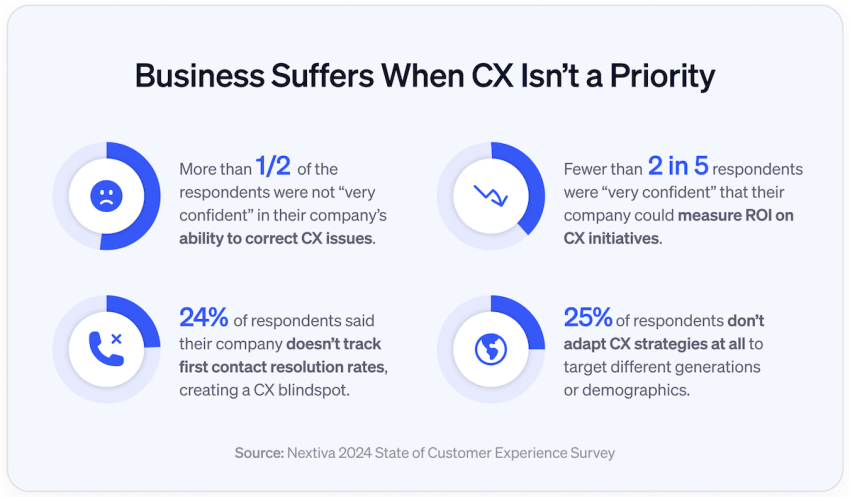
What can you learn from SBI’s digital transformation example?
SBI’s digital transformation shows that large-scale personalization depends on data unification. Breaking down internal silos is the first step toward delivering consistent, compliant, and customer-focused digital experiences. Its strategy proves that for any large-scale organization, creating a single, intelligent data hub isn’t just an advantage but a non-negotiable foundation for successful digital transformation.
How To Successfully Adopt Digital Transformation
Many executives and business owners are rethinking products and business strategies to keep up with consumer and employee shifts. They may be looking to offer new products, like a banking mobile app, or to leverage process automation to reduce the time to market for new car models.
No matter what business model you use or which industry you belong to, here’s what to keep in mind when implementing digital transformation efforts:
- Focus on customers: Solve customer pain points and personalize technology experiences. Consider each demographic you’re targeting and their digital customer journeys. As you expand your offerings, look for potential pain points for each audience segment.
- Embrace data: Leverage data to understand customers and inform decisions. You can also use this data to create more personalized and relevant user experiences throughout the customer lifecycle.
- Explore new tech: Use emerging technologies to improve efficiency and innovate. This can include software and hardware, and don’t be afraid to think outside the box. Follow digital transformation trends to stay up to date.
- Be adaptable: Curate a culture of learning and adapt to today’s customer demands. And remember that you can maintain your current company brand and culture while adapting to new changes.
- Track program effectiveness: Monitor key metrics to assess whether your new digital solutions are as effective as you’d hoped. These metrics should relate to quality, customer experience, and cost.
- Don’t abandon the human touch: Maintain human oversight to ensure your new technology works for you and delivers the best results possible. Toyota is an excellent example of leveraging new technology in the digital age while still using human expertise to ensure an exceptional result.

Transforming Digitally? You May Need These Key Takeaways
The path to digital transformation is unique for every business, but the principles for success are universal. As IKEA, Toyota, and Netflix demonstrate, it’s not just the introduction of new technologies that helps, but also their strategic use to solve real customer problems and unlock new efficiencies. Even intimidating examples like Goldman Sachs underscore the core message: transformation must be built on a deep understanding of the customer.
A common thread throughout these stories is the crucial role of communication — whether it’s understanding customer sentiment, optimizing internal workflows, or personalizing communication. If you’re looking to transform your business communications, we’re happy to support you.
Nextiva’s business communications solutions help you modernize your internal and external communications with innovative features like the following:
- Advanced speech analytics: Use AI to analyze the sentiment of recorded calls to better understand customer issues and identify training opportunities for your agents.
- Interactive voice response (IVR): Provide callers with automated navigation and assistance to optimize their experience.
- Workforce optimization: Ensure the right staffing levels during peak times to improve your contact center performance and employee engagement.
- Task automation: Automate repetitive tasks to save your team time and increase productivity.
- Dynamic scripting: Integrate ML and AI into dynamic live scripting so your agents always say the right thing.
- Chatbots for high-performing teams: Answer simple customer questions with automated chatbots and escalate complex requests to live agents.
Mountains Community Hospital, for example, improved its employee and patient experiences by using Nextiva’s digital solutions. Team members downloaded the NextivaOne app to answer calls from anywhere in the hospital, as they were always on the go. The hospital also deployed our HIPAA-compliant voice, video, and fax for all users, improving and automating communications compliance.
“The Nextiva Professional Service team was doing the work that needed to be done, and I didn’t have to babysit — the team took care of everything.”
~Patrick Miller, IT manager and information security officer at Mountains Community Hospital
It’s essential to remain open to digital transformation and its potential impact on customers. The examples above demonstrate this, and your business can be next.
The top AI-powered contact center.
All conversations in one platform. Empowering agents. Satisfying customers.

















 Customer Experience
Customer Experience 

